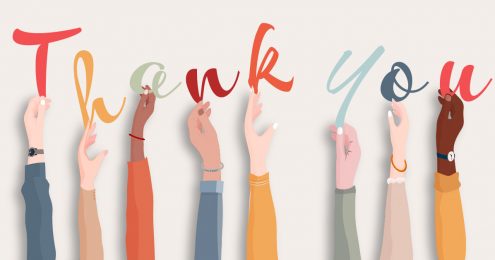My last corporate retreat: 1996
I’m sure we did constructive things – there must have been goals and objectives and agenda items that helped to propel our work forward.
But there’s only thing I can really remember clearly. Or at least somewhat clearly.
Night golf. Each senior executive wearing a headlamp. Glow in the dark golf balls. A different themed bar just past each green.
Pretty sure this was the team building exercise.
It was also my sole experience with staff retreats before diving into the nonprofit sector.
So, is there any difference between corporate and nonprofit retreats? Can you have an effective nonprofit retreat without the purchase of headlamps? What makes an effective nonprofit retreat anyway? And as a board chair or E.D., what should your role look like to maximize candor and productivity?
Read on my friends. Read on.
IN “ADVANCE” OF NONPROFIT BOARD OR STAFF RETREATS
Before we go any further, there seems to be a trend to call nonprofit retreats an “advance.” I guess the idea is that the gathering is in the service of “advancing” the work.
PUH-lease.
A retreat is a retreat. Check the dictionary. A period of withdrawal for meditation and/or study.
So first things first. Recognize it for what it is. An opportunity to step away from the day-to-day, business as usual. A chance to exhale, to consider your work, your goals, your future outside the office with your cell phones off (except for breaks). To make the time you never have to consider the issues that actually deserve the most time of all. The focus on the important rather than the urgent.
JOAN’S TOP 10 INGREDIENTS FOR A HOME RUN NONPROFIT BOARD OR STAFF RETREAT
It’s all in the planning. Here’s what you need:
- The retreat must be owned by its participants. A top down approach is a recipe for failure. If YOU want to have a retreat because YOU think that the group should be discussing what YOU want, re-think and re-frame. When a group has a shared investment in the goals and outcomes, you all win.
- Hire a facilitator who doesn’t simply direct traffic and keep the “queue.” I always joke with my clients that if I have one weakness as a facilitator, it’s keeping the queue. I’m too busy listening, capturing ideas, synthesizing, and helping to clarify the important points people are trying to make. You are hiring someone who is outside of your process; be sure that this person is smart, strategic and is a first rate listener. That is how you take fullest advantage of the objective point of view. Oh, one more thing. Hire a facilitator who is not afraid of being honest with the head honcho. This will be key in prepping her/him and in debriefing as well.
- Reach out to every single retreat participant for input. Ask each participant to answer a single question like, “This retreat will be a success for me if _________________,” and send the responses to your facilitator. This gets you important information and buy-in.
- Review participant feedback with E.D. or Board Chair. What do you all see? What are the trends? It is through the lens of this feedback that retreat goals should be set.
- A nonprofit retreat agenda is not simply a collection of agenda items. It must have an overriding purpose or theme. The best retreats take participants on a journey. Agenda item B builds on item A and so on.
- Identify a space that comes as close to ‘pampering’ as possible. If ‘pampering’ is unattainable, shoot for comfortable. A donor’s house maybe? Something other than a conference room and definitely out of the office, if you can swing it.
- Never ever put the word “icebreaker” on the agenda. You’ll regret it. People hate them and cringe when they see the word. Now that doesn’t mean you shouldn’t do them. Of course you should. Just be sneaky about them, build them in organically, or just call them something else. Here’s my recipe for the perfect ice breaker.
- Shoot for agenda quality over quantity. Are you bringing overworked, stressed-out staff members to a retreat with so many agenda items that it makes staff members feel overworked and stressed out? Fail. A breathless pace to a retreat is a waste of time and money. Divide your day into large blocks. Focus on the most important big things.
- Every retreat agenda should bring the work or the clients into the room. At one retreat, I had participants role play a diverse set of clients. I gave each one a client narrative. The staff member shared her/his story in the first person as that client and the rest of the group asked questions about her experience with the organization. It was very moving. And it helped turn “work” into “mission.”
- Debrief ASAP. Your facilitator should provide you a summary of evaluations within one business week following the retreat along with flip chart transcriptions and any other analyses the facilitator was charged with. Last, but perhaps most importantly, the agenda for this debrief is not simply a self- congratulatory job well done. It must include a plan for implementation that includes quarterly extended meetings that enable the attendees to review action items and assess results.
BONUS INGREDIENT: A GOOD CRY
So back in the corporate days, I felt strong company loyalty. In fact, during my night golf retreat, my loyalty increased with each hole (it helps when you find yourself raising a glass, over and over, to toast the largesse of the senior executives.)
But there’s something that’s just different about a nonprofit retreat. [Click to Tweet]
An important ingredient that can lead to transformation.
Passion.
The first staff retreat I had as an executive director began with an icebreaker (yeah, I know….) “Share with one another one thing that no one else knows about you.”
OK, I got this, I said to myself. I’ll talk about my really cool baseball card collection from the 1960s.
I so didn’t get it.
First up. Staff member Kim. She announces that she is about to transition and would like to be known as Nick. Another spoke about some family trauma; another talked about being intersex.
Before I knew it, the 20 people in the room were all crying. I started to tear up. What would I say that could match the passion of my staff? Baseball cards?
But then I really got it. I realized that the execution of a mission demands passion and that this passion manifests itself in strong emotions, sometimes conflict (which is why I am now a certified mediator) and yup, tears.
So pack yourself a good facilitator, a passionate tribe of staff members, a clear set of goals and get out of your office for an effective retreat.
And don’t forget the Kleenex.
———————————–
P.S. There’s a ton more on this website about becoming a great Executive Director. Please explore!




Loved these tips!!! I’m in the beginning stages of planning a retreat and found these very helpful.
Ashley. I’m heading to the West Coast to facilitate a full staff retreat for one of my clients – I actually reviewed this post MYSELF!!!! Glad they were helpful.
your articles are so helpful! Thank you
Pampering??? Has it ever occurred to you that this doesn’t go over well with donors? I have stopped donating to several nonprofits which spent unnecessarily on such things. There are plenty of off site locations, like parks of public libraries, which don’t cost thousands of dollars. It really bothers me to think that my donations might be spent on “pampering” instead of programs. I suggest you NEVER do this, and ALWAYS go for a no frills, preferably free location.
Annabelle. I’m away on vacation but needed to take time to respond and clarify. I want to both agree and disagree with you. Nonprofits typically can identify resources – I am a big fan of asking a donor to lend their apartment or home for a day for an offsite so that you have a comfortable location. A comfortable location allows staff members to feel appreciated and also to feel like it is something other than a full day meeting. I ran a retreat at a donor’s second home and we had staff bring in food and cooking became part of the team building. There are so many creative ideas. And yes, there are public spaces that can be used and if so, build the agenda in such a way that attendees get fresh air, a walk, perhaps conduct a session outside under a tree. And I do hope before you stopped donating, you sat down with a leader in the organization to understand the value the retreat had to the programs. An ideal retreat results in MORE EFFECTIVE PROGRAM WORK. Hope this makes sense.
Annabelle, anyone with a real understanding of how much it takes to pull of successful progams, events and projects–especially as a nonprofit–knows that it takes the sacrifice, dedication, and hard work of the staff to make it happen. Donors who appreciate the work that staff does understand how important it is for the staff to recharge their batteries, reflect and re-energize themselves as a team so that they can continue the important work of operating a nonprofit on a daily basis. Staff are not machines who work at the whim of the board and donors. They have a passion for the cause as well, and are often overworked and underappreciated. The best staff managers and directors are successful because they DO know how to do more with less–including plan and execute a meaningful retreat for their staff. After all, that’s what most nonprofits have to do! Savvy staff planners know how to create a retreat experience on a small budget that their staff members can appreciate and learn from that will launch them into the next leg of the journey. Perhaps you have had a less than pleasant experience working with staff members who have not used resources wisely. You and I have had different experiences, and I’m sure there are others who will agree with me that there are thousands of nonprofit staffers out there who deserve a little “pampering” after pulling all-nighters, managing crises during an event or project, and dealing delicately with board members and donors. All this while delivering a stellar end product to the constituents we serve.
This is great! Looked at this to plan a retreat and am looking at it right now (day before) just to check back in with the information. Appreciate it! I work for Boys & Girls Clubs and saw you at the Southwest Leadership Conference – great work!
I hate the idea that taking care of staff is an expense that donors can’t get behind. Our staff works for less money, in a high-stress job where everyday we remind them to be good stewards of their resources (a.k.a make the impossible happen with less money!). We are blessed beyond compare by their compassion and undying devotion to our mission. Sometimes I specifically ask my donors to make it possible to take care of our staff, actually it is one of our strategic plan initiatives! Turnover is really bad for the clients we serve- keeping staff engaged, trained, and appreciated is a GREAT investment for our donors. We can’t meet our mission without our staff.
Aside from the debrief which sounds great- Do you have any tips on some common follow up survey questions. My BoD is big on follow up surveys and I want to make sure the survey is brief but helpful for future planning.